We have assembled the PPP Expense Journal to assist Paycheck Protection Program (PPP) loan recipients in cataloging expenses through the covered period. While we have reasonable direction in the broad mechanics of computing forgiveness for PPP loans, the Small Business Administration has been slow to issue detailed instructions. We are developing tools to ease the administrative burden of the computations, but without final authoritative guidance, these tools cannot be finalized.
PPP loan recipients are encouraged to catalog their eligible expenses for the covered period within the PPP Expense Journal. While this journal may appear somewhat simplistic at a first glance, the information is formatted in a specific way so that we can easily ‘drop’ this information into a larger, more complex excel file once the final authoritative guidance is issued.
The PPP Expense Journal allows recipients to classify payments and provide supporting information such as Invoice Number, Check Number, and description to be used in creating a package of supporting documents for lenders during the forgiveness process. As the Paycheck Protection Program established separate classes of eligible expenses (Expense Category) we would like to briefly explain each category to assist in classification:
Payroll Costs:
- Gross Wages – Sum of compensation for employees which includes salary, wage, commission, cash tip or equivalent, vacation, parental, family, medical, sick leave, and allowance for dismissal or separation.
- State/Local Taxes (ER) – Sum of payments to State or local authorities assessed on the compensation of employees. Employee tax portions are ineligible. Typical eligible expenses in this category consist of the employer portions of unemployment and disability taxes, or a local tax such as MCTMT.
- Health Care Benefits – Sum of payments for group health care benefits and insurance premiums. Gross payments by the employer must be reduced by amounts withheld/deducted from the employee. We have included two categories to reflect the gross payments [Health Care Benefits (Gross)] and employee withholdings [Health Care Benefits (EE)]. Note that the employee withholdings should be entered as a negative amount in the journal.
- Retirement Benefits – Payments made for the employer portion of retirement benefits.
- Self-Employment Income – Includes owner compensation replacement (i.e. the net profit line of Schedule C of Federal 1040) for those that are self-employed. For partnerships payroll costs include self-employment income of general active partners up to $100,000 annualized.
Other Costs:
- Mortgage Interest – Interest payments on mortgage obligations incurred before February 15, 2020 (does not include any prepayment or payment of principal).
- Other Interest – Interest payments on any other debt obligations incurred before February 15, 2020. Note that under current guidance the loan proceeds can be used to pay this ‘other interest’, however, it appears this category of costs may not be eligible for forgiveness.
- Rent Expense – Rent for a lease in force before February 15, 2020.
- Utilities – Certain utilities for which service started before February 15, 2020. This includes payments for electricity, gas, water, transportation, telephone, and internet access.
The above list is intended to be a guide and reflects our current understanding of the PPP forgiveness calculations. The information above is subject to change at any time and should not be considered authoritative advice. As guidance on PPP loan eligibility has been piecemeal (updates continue to arrive), we expect final authoritative guidance on forgiveness to follow a similar format. We will continue to follow developments in this area and update the classifications and guidance above as appropriate.

